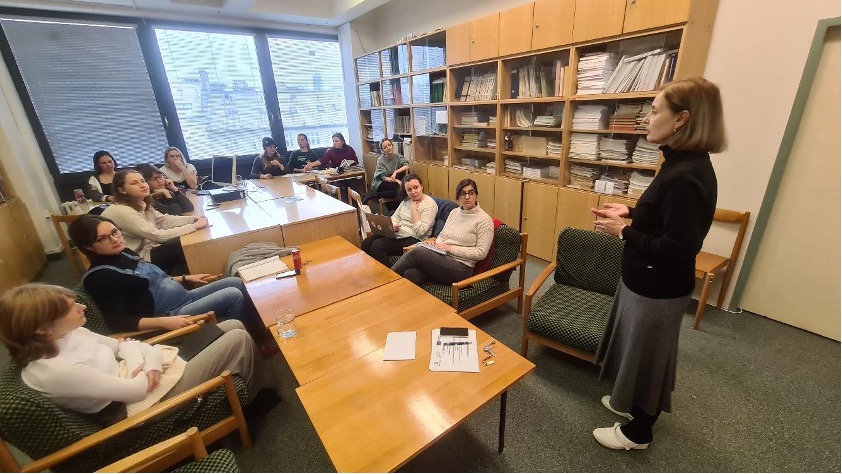On November 30th, 2023, during the academic training DISASTER RISK MANAGEMENT SafeCult Bratislava, Slovakia was attended by 12 participants, 8 students of the PhD program for conservation scientists, members of STUBA, and 4 restorers and conservators of the Slovak National Archive (MISR). All participants were selected with the potential to disseminate the knowledge gained in the future profession in libraries and museums, in the education of the conservators, restorers and conservation scientists on university grounds (Slovak University of Technology, Academy of Fine Arts and Design in Bratislava, and in Slovak archives). Participants were given access to the G-Classroom with SafeCult training course materials for three courses developed within the project SafeCult (for experts, supervisors and volunteers). The study materials contained test questions and let participants of the course self-evaluate whether they gained the knowledge, or not. In the first phase, participants received instruction to self-study all the materials available in each module of the course and they go one week to learn them. Also, they were asked to write down questions and topics that they thought should be discussed more in detail during the face-to-face training. The training program was opened by the project coordinator, Katarína Vizárová, who welcomed everyone present, gave the organizational instructions, presented the activity as such, and put it in the context of the current situation in disaster risk management of cultural heritage in Slovakia. Later, Radko Tiňo briefly introduced the project and explained its importance from the point of view of the need to start the systematic creation of disaster risk management plans for institutions caring for written heritage in Slovakia and the EU. He explained the current approach, which in Slovak legislation does remember the prevention of the risk of extraordinary events, but primarily only in the field of civil protection, and not in the protection of heritage values. He emphasized the necessity of cooperation with the authorities, training for the needs of civil protection and the inclusion of specifics arising from the threat and management of heritage materials and objects.
Radko Tiňo explained the concept of identification, analysis and mitigation of risks threatening the written heritage, as well as model examples of the creation of Disaster risk management plans from abroad. He went into depth about the importance of analyse scenarios of potential risks to understand the best way to threats from water, fire and mechanical damage, which were later analyzed in detail. In the next part, Katarina Vizarová devoted herself to the specific threat and damage caused by water, where she showed, using the examples of floods from the Czech Republic in 2002, what happened, what the approaches and actions before, during and after the flood, and last but not least, how it was necessary to take care of drowned books and documents immediately after the flood and in the period after it. Two video manuals regarding the conservation of water-damaged documents, prepared during the SafeCult project activities were broadcast to participants of the training. Subsequently, Radko Tiňo presented examples of good practices in the event of a fire, using a specific example from the large fire at the UNESCO site in Banská Štiavnica, which occurred in March 2023 and affected, among other things, the buildings and collections of the Mining Archive and the Mining Museum. He emphasized the fact that during a fire, damage often occurs simultaneously with the water that firefighters use to extinguish the fire. He showed a concrete example of how the management of the event took place practically from its inception to the present when the investigation into the origin of the fire and the rectification of the damage caused are still ongoing. Part of the training materials is also a video of an interview with the director of the mining archive, who coincidentally was at the scene of the fire almost from the beginning and managed its management. His valuable experience can thus serve as a valuable source of information for others.
The last part of the training was devoted to mechanical damage to written heritage and the management of extraordinary events connected with it. It was presented by Dušana Grešová (SNA), who also participated in the preparation of materials for the SafeCult course.
The last part concerned the discussion of the lecturers with the training participants, during which the possibility/requirement of an intensive certified course was discussed, which should be intended for selected employees of the largest and relevant memory and fund institutions of the Slovak Republic, who should soon start working on the preparation of Disaster risk management plans for their parent organizations.
The SafeCult training course at National Central Library of Florence – Meeting Highlights


